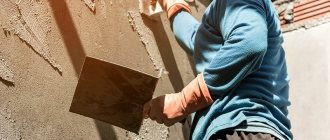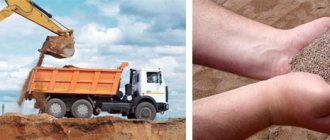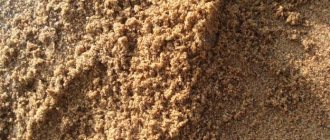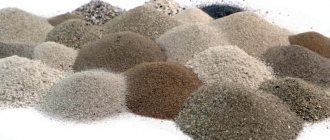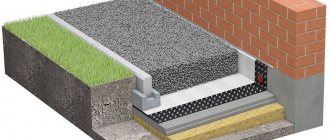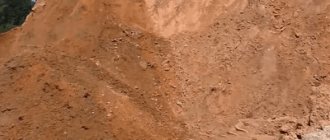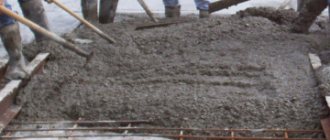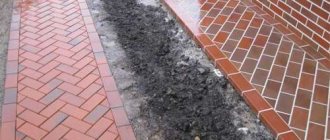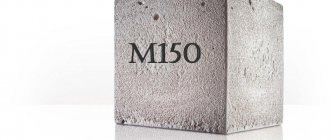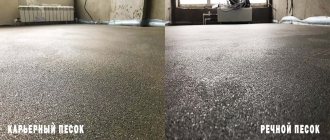How to choose sand for a children's sandbox
The sandbox is an indispensable attribute of children's playgrounds in preschool institutions. Playing with natural materials plays an important role in a child’s development. This is why many child psychologists and teachers use sand in their work. It helps develop coordination of movements, fine motor skills, as well as stimulate cognitive processes, and allows you to introduce the child to concepts such as shape, weight, volume. Thanks to such versatility of the material, many parents are thinking about installing a sandbox in the courtyard of a private house or even in an apartment. When choosing this design for children, it is important to understand that the filler must be absolutely safe, because the child has direct contact with it. How and what kind of sand to choose for a sandbox? This will be discussed further.
Place for a sandbox in the garden.
First of all, we decide on a place for a sandbox on the playground. What are our selection conditions? The main thing is that the child must be under constant supervision, regardless of whether the mother (or father) is doing household chores or working in the garden or garage. The second condition is that you need to choose a well-lit , dry place for the sandbox, definitely not in a lowland, otherwise puddles cannot be avoided after rain. We decide on the size and carry out the markings. In our case, the sandbox on the playground will take only 10 square meters. This area is quite enough to build a fully functional sandbox. At the same time, rounded contours do not have to be made like ours. Next, remove 15-20 cm of the top layer of soil. Before proceeding with further actions, we install drainage . Drainage on the playground will allow us to ensure that the sand (in our case) dries quickly after rain.
Basic material requirements
When wondering what kind of sand is needed for a sandbox, you, of course, understand that you cannot use ordinary material from the nearest beach and quarry. The filler for the playing area can only be special and carefully processed raw materials. To ensure the comfort and safety of the baby, it is necessary to check compliance with established state standards, namely GOST R 52301-200. Sand for a children's sandbox should be selected taking into account the following criteria:
- certification: the seller needs to check documents that indicate the quality of the product, a conclusion on a sanitary and epidemiological inspection;
- hygiene: make sure the sand is carefully processed;
- composition: the material should be free of large fractions (more than 2 mm), sharp objects (stones and shells) and other impurities.
The volume of sand required for a children's sandbox depends on its size, but the recommended layer depth is 10–15 cm.
Sand
Sand for sandboxes in kindergartens and playgrounds
Ours offers you to purchase sand for sandboxes, which is suitable for any children's playground.
We sell sand both for municipal district administrations and for kindergartens. What would a kindergarten be without a colorful sandbox, because it is in the sandbox that children can spend many hours in a row without disturbing adults. In addition, experts believe that playing with sand develops children. Playing outdoors teaches you how to communicate with other children, allows you to show your imagination and acquire some skills.
However, not all sandboxes can be safe for children's health. Let's consider what composition sand should have for sandboxes in kindergartens . When a child plays in the sandbox, he picks it up and sometimes even tastes it, so great attention must be paid to the condition of the sand in order to protect our kids. Any sand will not work here. For example, quarry sand contains not only large stones and clay, but also zinc and lead, which are hazardous to health.
Sand for children's sandboxes must comply with the following GOST parameters:
- Clean sand, free of debris and various impurities;
- Size from one to two millimeters, fine enough sand will rise into the air and enter the child’s respiratory tract;
- Check by a medical professional to exclude viruses and infections.
Visually it is very easy to distinguish high-quality sand from low-quality sand. Sand for children's sandboxes should be of medium fraction, without stones, pebbles and shells. Color ranges from sunny white to brown.
Our company provides the opportunity to buy sand for children's sandboxes, which meets all the parameters of GOST, is provided with a certificate for children's sand and has passed all tests for the chemical composition. By calling us, you can order sand for children's sandboxes at affordable prices.
This type of product, in terms of its properties, meets all the requirements and requests regarding quality, and also has a quality passport, a certificate of compliance with standards and a conclusion of a sanitary and epidemiological examination.
Calculation of the amount of sand for a sandbox
A standard sandbox has a length and width of 1.8 m each. The depth is about 20-30 cm. In total, it turns out that the volume of sand for one sandbox is 0.7-0.9 cubic meters.
If there are 6 sandboxes on the site, then sand for children's sandboxes is needed in the amount of 5 cubic meters. This is exactly how much a dump truck brings at a time. In other words, 5 cu. m. is 150 bags, each of which contains 50 kg. This is 7500 kg. Sand.
The cost of one bag of sand 50 kg (0.03 m3) is 110.00 rubles (including VAT). ( delivery is calculated separately )
The cost of 1 m3 of sand without packaging in bags is calculated individually and depends on the total order volume and delivery address. (when ordering in bulk, the dump truck will unload everything in one or two places, and you will have to scatter it into the sandboxes yourself).
Types of material
Only certain types of filler can be used for a children's play area. Some parents are attracted by construction sand due to its low price. Of course, it is better to refuse this option, since it may contain a large amount of harmful impurities, heavy metals, and asbestos dust. Washed and high-quality processed river sand is considered the best for a sandbox. It is extracted from natural reservoirs, and then washed and sifted.
Another option for filling a sandbox is quarry sand. Such material is formed as a result of the destruction of rocks. Due to the presence of clay in it, it molds perfectly and has a reddish tint. Before filling children's sandboxes, it is also pre-treated to prevent the entry of wood species, waste products of birds and animals.
Recently, quartz sand has become very popular. This material is made by chemically grinding the mineral into small fractions. The advantages of quartz sand are that it is painted in multi-colored colors that do not fade when exposed to sunlight. This play space filler will definitely delight kids.
Regardless of the type and composition of the material, heat treatment of the sand must be carried out in a sandbox.
Calcination must be performed regularly, it is recommended to do this at least twice a year. In addition, it is important to constantly monitor the hygiene and safety of the sand. Remember that only a responsible attitude of adults towards a child’s play area guarantees the safety of the baby’s health. ← whole list
Kinds
We sell washed, sifted sand for children's sandboxes - you can buy bulk mixture in bags from our company. There are two categories of material in warehouses:
- Fine fraction – main characteristics: softness, flowability, friability and safety for children. Can be used for sculpting. Suitable for small children.
- Coarse fraction – characterized by the large size of sand grains. More suitable for older children. It is convenient to play outdoor games on it, so it can be used as a mound on playgrounds.
There are two types of sandbox composition: river and quarry. The first is often used in the construction field, everyday life, and is characterized by a low price. It is extracted from rivers, carefully sifted, removing debris and shell particles, and always calcined. Thanks to this technology, the final bulk mixture meets the state standard. The composition of the river variety is pleasant to the touch and comfortable. Does not contain large fractions, dust, gravel and other components that pose a threat to children.
Do-it-yourself children's sandbox for a summer cottage: drawings, options, materials, choice of sand
There is no need to explain why children need a sandbox. There is hardly anyone who did not play in the sand as a child. You can make a good sandbox on your own in literally half a day. This will not only save some money, but, perhaps more importantly, will make dad’s authority much more significant. A do-it-yourself sandbox is built for family use when the first-born is already vigorously stomping around, and a collective sandbox is built at the beginning of arranging a children’s playground in the local area.
A sandbox for children's games is, as is known, low, 25-40 cm high above the ground, a fence or box, with or without a bottom, 1.2-3 m in diameter, into which sand is poured. It's important in the sandbox, because... most susceptible to contamination, and the children's sandbox must meet sanitary and hygienic requirements for children's household items. For a relatively small, 2x2 m sandbox, it requires approx. 1 cubic meter. To prepare such a quantity of ordinary sand at home for a children's sandbox, you will need to set up an entire production facility. Store-bought mixtures are not cheap, and no one can give a reliable guarantee that they will retain their properties outdoors. If they still correspond to the declared ones. However, a certain type of construction sand (not at all the most expensive) may be suitable for a sandbox, provided it is replaced annually or prepared for refilling. Therefore, a special section will be devoted further to the choice of sand for the sandbox.
Selecting a location
The location of the sandbox relative to the cardinal directions and sunlight
To make a sandbox correctly, you must first choose a suitable place for it. Place the sandbox on the site, as shown in Fig. in general, in the sector from north to southeast. It's all about ultraviolet light (UV). In the morning, when the air is fresher and clearer, its share of sunlight is greater, but the UV radiation itself is softer. Remember, doctors recommend sunbathing in the morning. In the afternoon, due to physical phenomena with dusty air and more saturated with water vapor, the share of UV decreases somewhat, but its spectrum becomes more severe. Therefore, in the afternoon, a shadow should fall on the sandbox.
However, building a sandbox under a tree is not recommended. You don’t have to wait for leaf fall: even in the summer, garbage, bird droppings and insects will fall into the sandbox. There is absolutely no need for spiders in the sandbox: a spider venom, which is safe for an adult, can bite through a child’s skin, and spider venom does not cause immunity, but, on the contrary, sensitization, increased sensitivity to it. Most spiders cannot stand bright light and dryness, so the sandbox should be located no closer than 3-4 m from frequently watered beds, bushes, ponds, fountains, etc. sources of moisture.
The next factor concerns not the sandbox itself, but the house and the landscaped area near it. Sand is an excellent abrasive. Grains of sand carried on shoes can quickly ruin not only parquet or laminate flooring, but also a paved garden path. Therefore, it is highly desirable that there be at least 1.5-2 m of lawn or blind area around the sandbox to remove sand from shoes. If the sandbox is not on the lawn, you can put cleaning mats around it for the hallway, but options from scrap materials are also possible, see below.
Preparing the site
Sandboxes are made permanent, which overwinter in the open air, and seasonal, which are put under a roof for the winter. The latter do not necessarily have a bottom, which requires more material consumption and adds weight. Permanent sandboxes are usually built for several generations of children, and seasonal sandboxes are a typical sandbox for a country house. With more or less careful use, it will serve not only children, but also grandchildren. The construction of both types of sandbox differs, in essence, only in the method of installing the box, see below.
In any case , preparing a place for the sandbox and fixing it on it is carried out in stages as follows:
- In the selected area, remove the turf or the top loose/littered layer of soil by 15-20 cm, i.e. half a bayonet of a shovel, and with the same exit to the sides;
- The area is leveled, covered with any sand in a layer of 5-6 cm, and passed with a rake;
- The sand backfill is covered with geotextile, agrofibre or, in a very budget version, propylene matting from old bags unraveled into panels, with a 30-40 cm offset along the contour. Such insulation will not allow roots and soil animals to enter the sandbox, but will release it into the ground excess moisture;
- After installing the box (see figure), the insulation flaps are folded up and temporarily attached with tape to the sides of the box;
Isolation of the sandbox from the ground
- The trench bordering the box is filled with the excavated soil, compacting it;
- Excess insulation is cut off or tucked in, tucked with a sliver, ruler, etc.
Note: if the sandbox is seasonal, then it is better to tuck the insulation. In the fall, her lapels are pulled out and straightened. The box is removed, and then the sand can be taken out for winter storage. Or to a construction site, if the need for a sandbox has passed.
Does a sandbox need a lid?
It is clear why sand is attractive to cats and dogs and why their completely natural needs are incompatible with human hygiene. It is also highly undesirable for children to play on completely damp sand. It sticks better, but it doesn’t take long to catch a cold. You can, of course, when the sandbox is not in use, put pipes, boards, poles on it, cover it with film and press it down with bricks. But in the adult summer, when there are already too many worries on the site, this is troublesome and does not reduce the amount of rubbish on the territory. Therefore, the sandbox still needs a lid.
photo: sandboxes with lids
Note: Expensive commercial sandbox mixtures contain fragrances that repel animals. But, firstly, they “burn out” pretty quickly. Secondly, there are no independent medical statistics on the effects of these substances on human health. Since we are talking about the health of not just children, but of children, then, as they say, it is better to stay out of harm’s way.
The simplest sandbox cover
A sandbox with a lid, if we exclude completely exotic versions of a fan-type lid, self-lifting with a mechanism, etc., is made in three ways, see fig. higher. The simplest option is a regular shield made of boards or plywood, as in Fig. left. But then the little ones won’t get into the sandbox without the help of adults (perhaps those who are very busy right now). Secondly, due to such sandbox covers, injuries are possible. A neat, smart and independent child, trying to put his workplace in order like an adult, pulls a shield that is too heavy for him to lift, and it falls on his little owner. There are no serious cases noted, there is not enough roaring and resentment.
The second option is a folding lid, or a book that transforms into a convenient bench, on the left in Fig. It’s not at all difficult to make one; The diagram of the transformer cover for the sandbox is shown in Fig. on right. Materials - boards (100-150)x(20-30) and beams 50x50. The beam (a) in a closed sandbox is under the lid, and the beam (b) is on it, so there is no need to calculate exactly the indents/gaps/offsets with this mechanism. By extending the beam (b) the tilt of the backrest is adjusted.
Scheme of a folding lid for a sandbox
1 card loops with wings as wide as the thickness of the board; It is better to take barn hinges 2. In the middle of the upper boards of the back, cut-outs-grips are made (shown by the arrow on the left in the figure above). If you need a solid lid, then door handles are attached in the same places.
The second option is a sandbox with a hinged lid, on the right in Fig. higher, more suitable for children of different ages, when the eldest (eldest) may have already outgrown the sandbox, but takes care of his little brother (sister). Then the eldest, who is already able to lift a fairly large sheet of plywood or painted chipboard, will have a play/work table at his disposal, and the little one will have his own.
Topside Materials
It is preferable to make sandboxes wooden; wood in this case is the most environmentally friendly and least traumatic material. With a simple and completely harmless treatment, you can achieve its durability in the open air for over 10 years, which is more than enough for a sandbox. Other options for constructing a sandbox will be discussed further, but for now let’s deal with wooden ones.
Preparing parts
Preparation of material for the manufacture of a wooden sandbox comes down to double impregnation of ready-to-assemble parts with a water-polymer emulsion (WPE). There is no point in using expensive certified oil and silicone water repellents (water-repellent compounds) and antiseptics in this case: there are few cracks and nooks that retain moisture (this is the so-called capillary entrapment) in the sandbox, they are all well ventilated and/or are in contact with moisture-absorbing sand. Free work, which in many other cases helps out the home handyman, is not applicable in this case, because Motor oils contain additives, the presence of which in children's household items is unacceptable.
Note: the underground parts of permanent sandboxes are also treated before installation in place, see below, with bitumen mastic or doused with boiling bitumen.
For the same reasons, almost any tree will suit the sandbox, even alder and aspen that are unsuitable for construction. Their low resistance to rot and mold is compensated by “frying” in the sun and contact with sand, and their low mechanical strength does not matter for a practically unloaded sandbox. For permanent sandboxes, it is better, of course, to take pine or other conifers. Birch is not suitable for any structures exposed to atmospheric influences; it molds very easily.
Sandbox side made of tongue and groove boards
As for choosing the type of lumber, it is best to use quarter boards or tongue and groove boards; they will prevent the penetration of atmospheric moisture into the sand through the walls. In addition, tongue-and-groove benches will allow you to build strong, wide benches, see figure, and the folding lid of the sandbox will make it reliable and durable. A quite good sandbox is made from a tongue-and-groove board 16-20 mm thick. Of course, when assembling the box, the tongue ridge of the top board will have to be removed.
Note: The tongue of the drawer sides should always face upward, and the tongue of the bottom quarter should always face outward if quarter boards are used. Otherwise, moisture will stagnate in the connection.
Building a sandbox
The sandbox box is made 2-3 boards high, depending on their width. They are assembled by attaching the corners with self-tapping screws to pieces of timber 50x50 long in height for a box for a seasonal sandbox or with “legs” of 30-40 cm for a permanent one. A 100 mm board requires 2 fastening points, and a 150 mm board requires 3. If the walls are made of simple edged or quarter boards and their length exceeds approximately 1.8 m, then another piece of the same beam is attached in the middle of each wall.
Drawings of a summer sandbox for a summer residence
The corners of the seasonal sandbox must be additionally reinforced so that its box can be turned by 1 person without the risk of breaking it. In this case, the corner posts are placed on the outside, and the intersecting boards crash into each other halfway up the tree. Drawings of a country sandbox for seasonal use are shown in Fig. Of course, a permanent one made in this way will not be any worse.
Side-seats
Defective sandbox corner
The side of the sandbox is a frame made of boards. It gives her box extra rigidity and serves as a seat and shelf for toys. To ensure the board is even, the ends of its boards are sawn at 45 degrees. Here, firstly, you need to pay attention to the coincidence of the edges. The protrusion of the corner, see Fig., is dangerous, children scratch on such hooks, as if they were being pulled there by a magnet. Such imperfections must be filed down and the outer corners of the edge must be sanded to roundness.
How the side is placed on the box can be seen in pos. 1 pic. It is definitely attached to the corner and intermediate posts. But if you leave it like that, the board will soon break off.
Fastening the sides of the sandbox
Fastening to the edge of the drawer board, pos. 2, not entirely reliable, kids are angry people. Backing block B is also not an ideal solution, it prevents children from putting toys into hiding places under the side, but what kind of game is this? The best way to strengthen the side of the sandbox is pieces of plinth-fillets from 40x40 mm, pos. 3. For 1 m of the length of the side, a piece 30 cm long, installed in the middle, is enough. Attachment points – 3, i.e. in increments of 10 cm. In addition, if the same supports are installed under the outer extension of the side, then its fastening can be made hidden.
Roof
Based on the conditions for placing the sandbox, it is clear that it needs a roof. The classic option is a fungus. But adults who remember playing in the sandbox also remember that he doesn’t really hide from anything, he just hits him in the forehead every now and then. In the center of the sandbox is the game itself, and there is a pillar sticking out. Fungus on the playground, of course, is needed for quiet and quiet games, but to the side. But it makes sense to make a sandbox with fungus only if there are waste building materials left and there is no money for new ones. In such a case, see the video on how to make a sandbox with fungus from scrap materials.
Video: do-it-yourself sandbox with fungus
The most durable and reliable version of the sandbox roof is on 4 pillars, pos. 1 in Fig. One problem is that with a nose, the restless person then has the same problem as reckless drivers with a radiator: there is always a tree or a pole in front of him.
Roof options for sandboxes
Much safer than a roof on 2 pillars, pos. 2 and 3. They are attached to the sides of the box at their location. Therefore, if the roof is heavy and/or has steep slopes, which provides better shelter, then the pillars need to be supported with struts, pos. 2.
It is advisable to make the roof of the seasonal sandbox soft, cap, pos. 3, or tension, pos. 4. The latter allows you to minimize wood consumption and provides very good shelter. The roofing material for all roofs is any suitable. If polycarbonate remains from a greenhouse, porch, canopy or, say, gazebo, this is the best option.
A special case is the sandbox-wigwam, pos. 5, or sandbox hut. Although there are more pillars in it, people hit them with faces much less often. The point here is in some features of children's psychophysiology of vision and motor skills. In general, the highlight is that the pillars are tilted inward.
Installation procedure
This question only applies to persistent sandboxes. And the real question is how to assemble the product from parts: on the spot, similar to “adult” buildings, or, for example, a dog house, entirely where it is more convenient, see Fig., and put it in place assembled. For a sandbox, the second option is definitely preferable, because allows you to significantly reduce the amount of excavation work. This is also significant because the sandbox is placed on a developed area, and you don’t want to mutilate the lawn or area, into which a lot of work has also been invested, beyond what is necessary.
Treating the sandbox box before installing it in place
Another argument in favor of installing a ready-made box is that when assembling it on site, you will definitely need leveling, adjusting to size and straightening the contour. A country toilet will not last long; sandbox in terms of more. And the finished box with sides is quite rigid, lightly loaded and will hold up even if the zero cycle is far from perfect.
Step-by-step instructions for installing the assembled sandbox in place are as follows:
- Prepare a pit as described above, but without sand filling and without laying insulation;
- In places where the posts (posts) go into the ground, use a hand drill with a diameter of 80-100 mm to drill holes to the depth of the posts plus 10-15 cm, i.e. 40-55 cm, because It is enough to deepen the posts by 30-40 cm. With a 10-cm drill, this work is done effortlessly, 5-10 minutes per well;
- In the process of sand backfilling for insulation, the wells are filled with sand to about half or slightly higher;
- Before processing with bitumen, the “legs” of the box are sharpened by hewing with an ax or sawing into a wedge or into an elongated pyramid;
- When the insulation is laid, it is cut into petals above the wellheads;
- The box is placed “with its feet” in the wells and lowered to the level, first by hand, and then by tapping the ends of the racks with a leopard - a wooden sledgehammer. You don’t need to peel with all your might, you need to gradually chip away, going along the contour;
- The roof, if provided, is assembled on site.
Note: you can make a leopard with your own hands from a log or a piece of timber from 130x130 cm, mounted on a handle.
More materials
For quick self-assembly of sandboxes, plastic modules are produced, see Fig., in trade practice for some reason called linear polyethylene. Nothing bad is known about them, but if you are arranging a garden or creating a flower bed, then they can be replaced with border elements for flower beds from a garden set; especially - elements for flower beds on the lawn. They are suitable in height, sand will not spill through the joints, they do not require excavation work, but they stay firmly in the ground. And it will cost less to build a sandbox from the garden border.
Prefabricated plastic sandbox
Tire sandbox
A common option for a “sandbox quickly and for nothing” is made from tires, see fig. on right. Free, but, firstly, not very hygienic: moisture stagnates in the tire pockets, and the sand can rot. Secondly - steel cord. As the rubber on the cuts dries, the ends slowly but surely stick out, causing children to prick and scratch themselves on them. Of course, you can make a lot of useful crafts from tires, but they are not suitable for a sandbox.
Sandbox-boat with a box - a compartment for toys
Useful improvements
This is first and foremost a sandbox ship. It is not much more difficult to make than a regular one, but in the bow compartment, which in real ships is called the forepeak, it is very convenient to store toys and even small gardening supplies. Romance in the game, that goes without saying. In this case, the forepeak is equipped with a hatch cover and separated from the sandbox itself by a blank wall - a bulkhead, see fig. Since it’s a boat, we’ll call its parts nautical. If the forepeak is part of a sandbox, then there is no need to build a deck over it; the sand can rot without sunlight.
Scheme of the sandbox-house
The next option will require more work; even more than a sandbox with a roof. This is a sandbox-house for growth. Its design is strong and durable enough so that when a child outgrows playing in the sand, it can be used to lay a floor, cover the walls and thus create a playhouse. A diagram of the structure of the sandbox-house is shown in Fig. left.
About angles
If the dimensions of the sandbox in plan do not exceed approximately 2x2 m, then you can reduce the consumption of wood without losing the strength of the box by arranging corner seats, on the left in Fig. in the center above. According to psychology, this option is preferable for individualistic children.
Sandboxes with corner seats
A very beautiful and durable sandbox with corner seats is made from stumps and logs, not necessarily of the same size. And if you use saw cuts from the same logs to lay out a blind area around the box (in this case already a log house), then the removal of even very fine sand outside the playing area will be minimal, on the right in the same fig.
What kind of sand should I use?
Now let's return to the question of which construction sand is suitable for the sandbox. Small, almost white, pos. 1 on next rice. - definitely not. From a child’s point of view, it doesn’t mold well. And as an adult, it generates a lot of dust, gets into the eyes and everywhere, microscopically injuring the skin, which can contribute to the occurrence of allergies. Adult construction workers, healthy, hardy men, when working with such sand, wear protective clothing, respirators and goggles.
Also not suitable is white or slightly grayish quartz sand, pos. 2. It does not generate dust, but it does not stick at all, and it injures the skin to the point of visible scratches. Quartz is a very hard mineral and its grains are rarely rounded to full roundness.
Red sand, traded as gully sand, pos. 3, molds perfectly, but is also not suitable for the sandbox. There is a lot of clay in it, it gets very dirty. And to make matters worse, this clay is full of microscopic pores filled with nutrients. Just give it to harmful micro-living creatures.
For a sandbox, moderately yellowish sand of medium coarseness, pos. 4. There is enough clay in it for very fine modeling, but it covers the grains with a thin dense layer, making them non-traumatic and unsuitable for the settlement of microorganisms. Repeatedly, up to 3-4 times, such sand (it is most often sold as river sand) is used as follows:
- In winter it is stored in a dry, unheated room; better - in bags, or in the yard under film.
- In the spring, the sandbox is filled when warm weather sets in.
- If the sand has been in it for the winter, then when it is completely dry, it is selected and winnowed, see below.
- The sandbox is refilled layer by layer, in layers of 7-10 cm.
- The sand is poured into a winnowing box, i.e. a stream from a bucket from a height of human height in a moderate wind.
- The filled layer is air-dried for at least 24 hours before filling the next one.
Unusual
There is also a type of sandbox called a tabletop sandbox. Generally speaking, children playing in it are much more likely to clog their eyes, nose, and mouth, because... At the same time, the head is held straight, and not tilted face down. In addition, setting up a desktop sandbox is difficult, because... even a small amount of sand requires at least half a ton. And if the desktop sandbox is at home, then you will need a separate room that is not directly connected to others.
Home sandbox with colored sand
However, a child’s full development of his abilities is not something worth sparing money on, as long as there is some. A tabletop sandbox can be very useful for a child with the makings of a strategist, sailor, geographer, geologist, land surveyor or, say, a science fiction writer. Even a planetary scientist. In the future (let's hope there will be one) this specialty will certainly be in great demand. For example, in Fig. You can see how a relief map of the area is created from colored sand in a home sandbox. In general, the sandbox can be useful not only for little ones.
